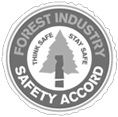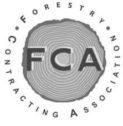Home / Training & Assessment / Tree Health / Lantra Professional Tree Inspection
Lantra Professional Tree Inspection
Who is this for?
The Lantra three-day course aims to provide specific tree inspection training at an advanced level for competent arboriculturists. This will enable you to identify defects from ground level, from a climbed inspection or inspection aided by the use of a Mobile Elevated Working Platform (MEWP).
This professional tree training course will train you in how to specify the necessary remedial works and record the inspection process; this would then form a part of a defensible system.
At the end of the course you will undertake a competence based assessment directly related to tree inspection. The course is not aimed at covering report writing; however, presentation of findings will be examined and advice given.
In order to be considered for this course, you must be an experienced and qualified arboriculturist with an in-depth knowledge of plant and arboricultural science. This will need to include a thorough knowledge of wood decaying fungi, identification and interpretation of signs and symptoms of ill health and structural failure across a wide range of tree species and circumstances.
You will also need to be thoroughly experienced in carrying out tree inspections and surveys. You will be professionally involved in arboriculture – specifically tree inspection, and you will be physically fit and able to carry out the tasks required of the course.
Duration:
3 days training with a Lantra Awards integrated assessed element completed on day 3
Attendees:
max. 12 per course
Venue:
This is normally completed at mwmac Ltd, near Builth Wells, Powys.
If you have enough people for a full course, we are able to run this course on your site (subject to a pre-course visit).
Pre-requisites:
None, however it is advisable to have a minimum of 5 years hands on experience working with trees
Qualification:
This is a training course which includes a Lantra “assessment”: Lantra Professional Tree Inspection
Those who pass the assessed element will receive a Lantra Certificate of Competence.
Those who fail will be provided with an in depth course report from the instructor, with advice on what to do to work towards re-taking the assessment.
CERTIFICATE TYPE:
Lantra Certificate of Competence
COURSE OBJECTIVES:
- Recognise the role of the tree inspector in risk management.
- Identify the legal framework in the context of statute and common law that affect tree inspection and the duties and liabilities of the owner, manager and inspector.
- Summarise how a tree system functions, what constitutes a safe tree and know that energy is required to keep the tree in a healthy/safe state.
- Adopt a systematic and consistent methodology for carrying out visual tree inspection at an advanced level with the aid of binoculars, mallet and probe.
- Collect data out in the field in accordance with the inspection instructions (having determined the scope and limitations) using a suitable format. (For this course a written survey template with appropriate headings will be used).
- Recognise a range of observable mechanical and biological defects as seen in trees and confirm by the use of textbooks where necessary.
- Identify a range of commonly seen pests, diseases and disorders that affect tree safety, confirm their identity by the use of textbooks, where necessary, and state the arboricultural significance of finding them in the field.
- State the appropriate control/remedial measures required to eliminate or reduce risks identified in the inspection process to an acceptable level.
- Determine when an aerial inspection is required, also if pro-active management recommendations can be made which may eliminate future defects from forming.
- Prioritise the necessary tree/management works with time scales based on a broad category of risk assessment.
- Identify when it is appropriate to recommend the use of decay detecting or measuring equipment, based on a basic knowledge of the working principles of commonly available equipment.
- Understand that a balance between the remedial measure opted for and the range of benefits/values that a tree may have requires special attention, for example amenity, wildlife, historical, veteran, rarity and public access.
Course Information Sheet:
Course Information Sheet – Lantra Professional Tree Inspection














